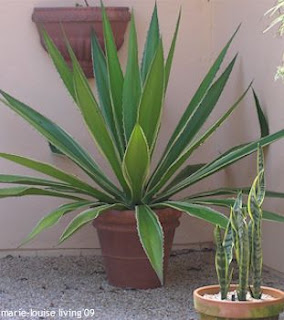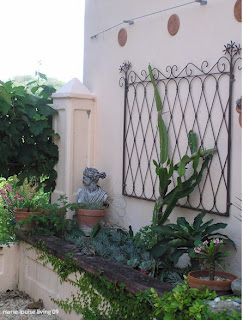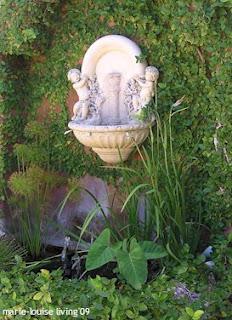
Thursday, January 29, 2009
Skywatch Friday

Yuraygir National Park, near Minnie Waters,
Far North Coast of New South Wales.
For more wonderful Skywatch pictures around the world
Wednesday, January 28, 2009
Home-made Pesto Sauce
 Campari on the Rocks for the Cook
Campari on the Rocks for the Cook
I have some lovely Basil in the Vegetable Patch and decide to make Spaghetti Pesto which all my family love.  The lovely Basil
The lovely Basil
 Pesto is one of the easiest and quickest meals to make as it involves no cooking apart from the spaghetti. It has 5 key ingredients. Basil leaves, parmesan cheese, pine nuts, garlic and olive oil.
Pesto is one of the easiest and quickest meals to make as it involves no cooking apart from the spaghetti. It has 5 key ingredients. Basil leaves, parmesan cheese, pine nuts, garlic and olive oil.
 Dish begging to be consumed with a glass of good Australian red wine.
Dish begging to be consumed with a glass of good Australian red wine.
I have listed the recipe for Home-made Pesto Sauce below:
(for 4 - 6 people)
80 grams fresh basil leaves, washed and dried
2 large cloves garlic, crushed
2 tablespoons pine kernels
pinch of salt
100 grams grated parmesan cheese
75 ml extra virgin olive oil
200 grams of spaghetti cooked al dente in salted boiling water.
Add basil leaves, garlic and pine nuts into a blender and pulse until you have a puree. Transfer puree to pan of cooked hot spaghetti and add the olive oil and parmesan cheese. Toss well to cover all the spaghetti strands and serve immediately with more parmesan.
Buon appetito!
Monday, January 26, 2009
Today's Flowers
Golden Shower Tree



Cassia Fistula is one of the most stunning trees grown in a tropical - subtropical climates, better known as the Golden Shower Tree or Indian Laburnum.




Cassia Fistula is one of the most stunning trees grown in a tropical - subtropical climates, better known as the Golden Shower Tree or Indian Laburnum.
Native to India, it flowers in summer and can be literally covered in showers of deep yellow blooms, each bunch up to about 40cm in length. When these trees usually flower, they have no leaves as they are semi-decidious and lose their leaves in late spring when the first flowers appear. But mine have received a lot of rain in the last two months which have encouraged them to grow leaves during flowering.
The flowers also have a lovely perfume that scent the garden and attract butterflies and bees alike.
For other beautiful pictures on flowers, please click here
Thursday, January 22, 2009
Skywatch, Friday
Far North Coast of New South Wales
To enjoy other beautiful Skywatch Pictures Click Here
Sunday, January 18, 2009
Grevilleas flowering in my garden
Friday, January 16, 2009
Busy Little Hands - The last of the summer beans

"Depodding" the last of the summer beans - this variety was a green dwarf snap bean, which were left until they went to seed. The seeds are brown in colour. I have already used them up and made a tasty vegetarian Nachos sauce.

This variety is called "Purble King". It's a climbing bean. As the name suggests the beans are a deep purble, but when you cook them they turn green. When you leave the beans on the plant, they naturally go to seed and dry off, so that you then can pick them and use the seeds. The seeds of these beans are a light in colour. I have not used them yet, but I think I will make a delicious Chilli Con Carne. Some of the seeds I keep and as I will plant this variety again at the beginning of next month for an autumn crop.
History of the Bean
Beans are one of the longest-cultivated plants, broad beans having been grown at least since ancient Egypt, and the common bean for six thousand years in the Americas.
Many modern dry beans come from old-world varieties of broad beans, but most of the kinds commonly eaten fresh come from the Americas, being first seen by Christopher Columbus during his conquest of a region of what may have been the Bahamas, where they were grown in fields.
One especially famous use of beans by pre-Columbian people is the Three Sisters method of companion plant cultivation:
On the east coast of what would come to be called the United States, some tribes would grow maize (corn), beans, and squash intermingled together, a system which had originated in Mexico. The corn would not be planted in rows as it is today, but in a checkerboard/hex fashion across a field, separate patches of one to four stalks each.
Beans would be planted around the base of the developing stalks, and would vine their way up as the stalks grew. All American beans at that time were vine plants, "bush beans" having only been bred more recently. The cornstalks would work as a trellis for the beans, and the beans would provide much-needed nitrogen for the corn.
Squash would then be planted in the spaces between the patches of corn in the field. They would be provided slight shelter from the sun by the corn, and would deter many animals from attacking the corn and beans, because their coarse, hairy vines and broad, stiff leaves are difficult or uncomfortable for animals like deer and raccoons to walk through, crows to land on, et cetera.
Beans were an important alternative source of protein throughout old and new world history, and still are today. There are over 4,000 cultivars of bean on record in the United States, alone.
An interesting modern example of the diversity of bean use is 15 bean soup, which, as the name implies, contains literally fifteen different varieties of bean. Source Wikipedia.
Labels:
Beans,
Dwarf Snap,
Purple King,
Seeds,
Vegetable Garden
Sunday, January 11, 2009
Today's Flowers - Pink Blooms

is part of the Verbenaceae family. It is native to West Africa. The Bleeding Heart Vine is an evergreen climber that flowers from Summer through to Autumn.
are amongst the best drought tolerant plants for your garden
once they are established.
 Hydrangea
HydrangeaThe most interesting feature of showy hydrangea flowerheads is their ability to change colour according to the pH level of the soil. Hydrangeas have blue flowers where the soil is naturally acidic, and pink or red blooms in alkaline soil.

Crepe myrtles are among the world's best flowering trees.
They are native to eastern Asia and are hardy in most parts of Australia.
The Bromeliaceae family consists of about 46 genera, several thousand species and a bewildering number of hybrids and cultivars. All are well able to adapt to their surroundings, which can range from steamy jungles to deserts.
Also known as 'angel wing' begonias because of their distinctive leaf shape, are best as garden plants or tub specimens, sited where they can receive morning sun. The bamboo-like stems of some varieties can rise as high as two metres each spring, bearing large clusters of attractive, drooping flowers from mid summer to late autumn.
For more lovely flower pictures click here
Labels:
Begonias,
Bleeding Heart Vine,
Bromeliad,
Crepe Myrtle,
Hydrangea,
Roses
Bog Garden
 "Sporty" taking an interest
"Sporty" taking an interest
Labels:
Bog Garden,
Canna Indica,
Cunjevoy,
Elephant Ears,
Papyrus,
Plants,
Spoon Lily,
Thalia
Wednesday, January 7, 2009
Italianate Courtyard
 The "Gatehouse".
The "Gatehouse". Gorgeous flowering Plumbago flank both sides of the entrance path.
 The immediate view when stepping through the "Gatehouse". I have used Ponytail palms, African Milk Trees and a large Agave Americana as focal points.
The immediate view when stepping through the "Gatehouse". I have used Ponytail palms, African Milk Trees and a large Agave Americana as focal points.

Agave Americana in all its glory - It is also called a "Century" plant because if you are lucky it might flower in your lifetime. A old fashioned "mother-in-laws tongue" plant makes also for a great living sculpture.
 The plant growing on the wrought iron trellis is a Red Dragon Fruit "Pitaya". It has spectacular flowers which then turn into large red fruit which are yummy to eat. It is also known as "brain fruit" as it supposed to be good for the brain cells (perhaps it will make me smarter).
The plant growing on the wrought iron trellis is a Red Dragon Fruit "Pitaya". It has spectacular flowers which then turn into large red fruit which are yummy to eat. It is also known as "brain fruit" as it supposed to be good for the brain cells (perhaps it will make me smarter).  This corner of the courtyard gets a lot of sun in summer and gets very hot and dry. Consequently it is an ideal spot of succulents and cactus. The plant to the left of the bust is a "Donkeys Ears" plant or a Giant Kalanchoe originating from Madagascar.
This corner of the courtyard gets a lot of sun in summer and gets very hot and dry. Consequently it is an ideal spot of succulents and cactus. The plant to the left of the bust is a "Donkeys Ears" plant or a Giant Kalanchoe originating from Madagascar. 
My little "sentinal" looking over the driveway complete with bow and arrrow.

A small romanesque fountain surrounded by creeping fig adds instant charm and atmosphere. The plant with the big leaves is an Elephant ears plant (Colocasia). They usually get gigantic in a bog garden.
Subscribe to:
Posts (Atom)






 " White Toothbrush"
" White Toothbrush" "Robin Gordon"
"Robin Gordon"


 "Moonlight"
"Moonlight"





 Cyperus papyrus, a wetland sedge that grows to 5 meters (15 ft) in height.
Cyperus papyrus, a wetland sedge that grows to 5 meters (15 ft) in height.






